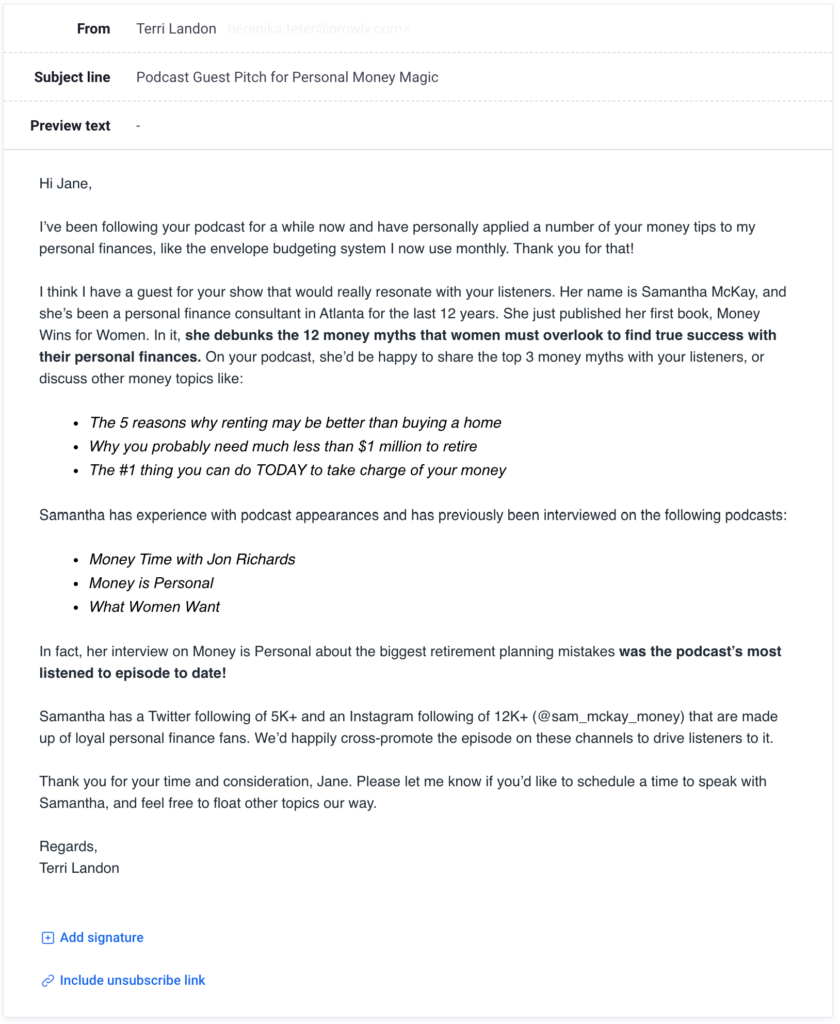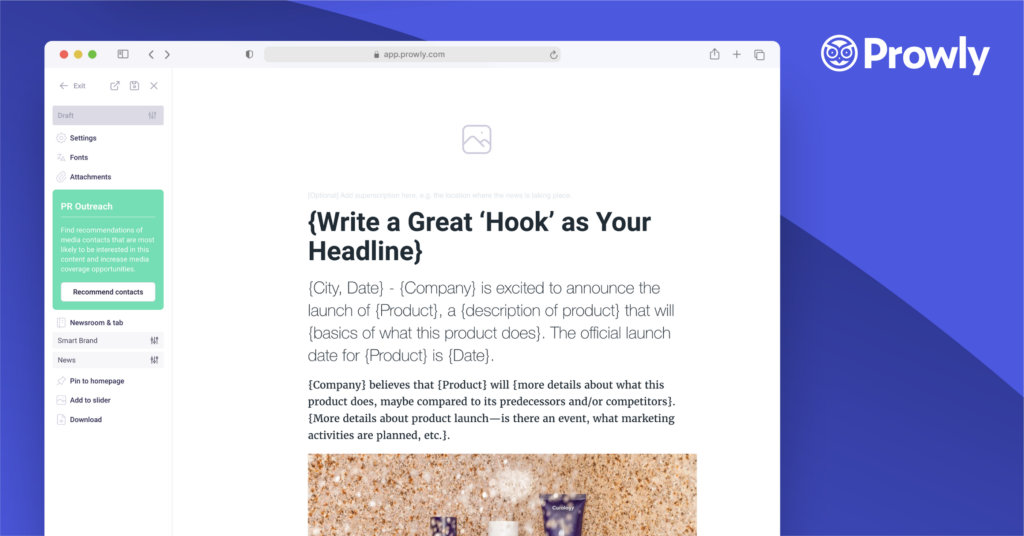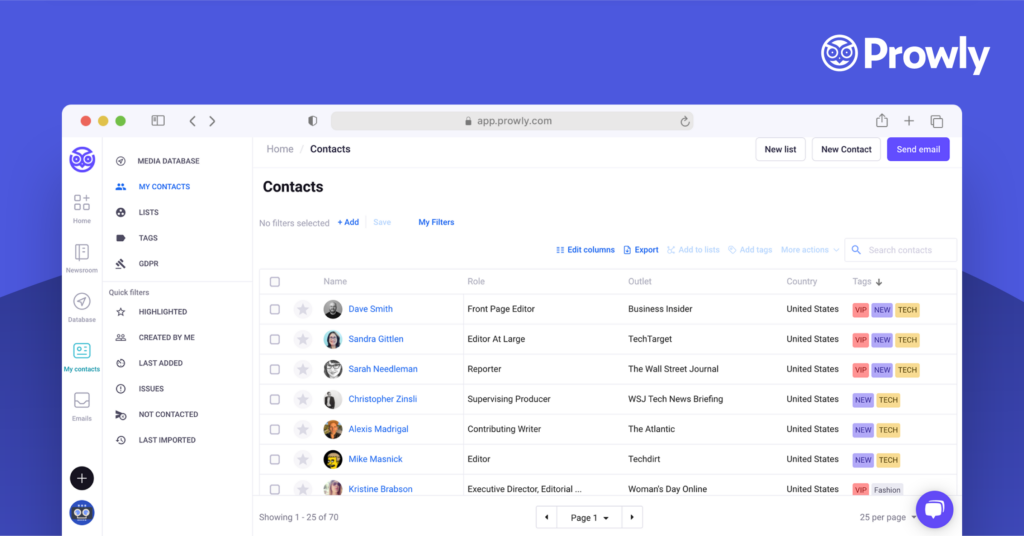Spam filters aren’t just something that email marketers have to worry about. Anyone who depends on email for starting and maintaining relationships needs to be aware of the rules involved when it comes to ensuring the safe delivery of your messages. That includes PR pros using email to send pitches to media contacts.
Even if you have no intention of doing anything that violates the rules and standards of email service providers, you can still get unwanted attention from spam filters. You don’t have to be a bad actor to end up in spam jail. Working in public relations means you have a lot to lose by mistakenly wandering over to the wrong side of good practices.
Here’s a list of some essential tips that will help to keep you on the right side of the line between smooth communication and limited—and even blocked—access to the people you reach out to with your pitches. Want to be 100% sure that your messages are landing in the right folders? Keep reading!
- Why some email pitches are landing in spam folders
- How to avoid spam folders when pitching the media
Why some email pitches are landing in spam folders
Spam traps
Any credible email service provider takes the issue of spam very seriously, as they should. Users who deliberately send spam to damage the server reputation of the service, which in turn affects mail sent by everyone else from the same provider. A low server reputation impacts deliverability, which is really the only important metric for users of a service.
Simply put, spammers ruin the party for everybody.
Spammers and email service providers are locked in a cat-and-mouse game where each side tries to outsmart the other. One of the tools the email service providers use in an attempt to identify spammers is what’s called a “spam trap”.
How do spam traps work, exactly?
1. Someone from the anti-spam arm of an email service provider or an internet service provider (ISP) will place an email address somewhere online, especially in places like open forums and reader comment sections.
2. The address is either created especially for this purpose and has not been used to send emails or is a recycled address from an account that has been closed. It’s a real address that exists and works.
3. The address is collected by spammers through a common practice called harvesting, or “scraping”, email addresses that are posted on the net.
4. Those addresses are monitored for any incoming messages, which could only be sent by someone who found the address online.
5. The IP or email client-server of the sender is recorded and either restricted or banned outright. The spam trap has caught a spammer!
It should go without saying, but it’s worth saying it anyway—don’t use email addresses found in random places on the internet. Get contact information only from legitimate, trustworthy sources.
Spam complaints
When you open a message in your email, there is an option to “report spam” or “mark as spam”. It’s there as a service to users and meant to help tag any messages that spam filters may have missed. It’s a powerful tool meant to keep inboxes clean and can severely punish spammers. However, just like spam filters, you can trigger spam complaints among recipients even when you don’t mean to.
A single complaint won’t hurt you but if you exceed certain limits, your ability to reach inboxes can be significantly limited and you can even have your account suspended.
Spam filters
It’s important to remember that the existence of spam filters is a good thing that benefits all of us. They improve the overall user experience by keeping junk mail out of our inboxes and identifying those who abuse email service.
Still, the same things that make filters sensitive to actual spam can sometimes be problematic for senders who have no intention of breaking the rules. Spam filters are designed to be on the lookout for certain things that characterize “spammy” mails, and you can trigger them by mistake if you’re not careful.
Here are some common mistakes that attract unwanted attention from spam filters:
- USING ALL CAPS IN YOUR SUBJECT LINE. Not only is this irritating for the recipient, but it’s a classic technique of spam emails. The same applies to using “!!!!!!!!!” for everything.
- The use of “salesy” words associated with spam. “free!”, “SALE!”, etc.
- Lack of personalization. When all of your emails are exactly the same, spam filters can assume they are sales-oriented. Always personalize your emails.
- Excessive formatting. Too many colors, multiple fonts, and other formatting tools used to get attention are associated with promotional emails. Keep the formatting of your message simple and professional.
- Large email “weight”. When visuals are included or attached, it increases the “weight” of the message in megabytes. Spam filters link this with unwanted commercial messages.
- The inclusion of too many links. Careful with the number of hyperlinks you include in your email—multiple links are a typical feature of marketing message calls to action.

How to avoid spam folders when pitching the media
Follow these tips to stay as far away as possible from spam folders. Let’s start with things to avoid:
- Deal only with addresses gained from legitimate sources. Be sure that any addresses you use are legitimate and active and come from a media database that is curated and kept up to date
- Don’t send out too many emails at once. Large batches of emails sent at the same time can show up on the radar of spam filters. If you have an unusually large number of recipients for a given mail, break it up into smaller batches.
- Wild variations in the number and frequency of your messages can get the kind of attention you don’t want. If you go from a fairly low baseline to a sudden huge volume of mails and then back again, this can be interpreted as suspicious behavior. Spread your campaigns out and avoid peaks and valleys.
- Don’t keep sending emails to addresses that have bounced a certain number of times—three times is a common standard. The bounces show that you're unlikely to get a response and every following bounce just adds to the suspicion that you’re not being careful about who you’re sending emails to, which is a characteristic of spammers.
- It isn’t 1998 anymore, so stop sending attachments in your PR mails. Not only do they attract extra attention from spam filters and make your message “larger”, recipients these days are wary of them because of computer security issues. It looks far more professional to use an online newsroom and digital press releases anyway.

Now let’s switch to things you should do to avoid spam folders:
- Pay attention to your media contacts. Build your email lists carefully, and update them regularly:
- Ask to be added to recipient address books or “white lists”. This is a signal to service provider algorithms that messages from your domain are welcome.
- Provide the kind of content that recipients expect and engage with. The more they open your messages and click on available links, the more blacklisting services can see that what you’re sending isn’t spam.
- Track your bounce and open rates. These are key metrics for measuring recipient engagement with your email. Keeping bounces low and opens high shows that your audience engagement is real and thus nothing of interest to blacklists.
- Remove addresses that consistently bounce. Hard bounces in particular (sending emails to inactive or non-existent addresses) are a huge red flag for blacklists. Maintaining database hygiene by deleting unresponsive addresses helps with a number of metrics and should be part of your regular routine.
- Keep a careful eye on your engagement metrics for sudden spikes in negative feedback, like bounces or lack of opens. This could reflect a mistake in your message, like a forgotten subject line or use of the wrong contact list, or something more serious, like a hacked account or spoofed address. When your statistical insights show something very out of the ordinary, something has gone wrong. Take the time to investigate before it turns into something worse.
- Use segmentation to deliver tailored content. Communicating with different groups with messaging adapted to their interests is one of the best ways to boost overall engagement, which is what blacklisting services are looking for as proof that you’re not sending spam.

Anti-spam measures are a necessary evil in the world of email and the same tools that help to catch spammers can also cause problems for you if you’re not careful.
Just remember that a little caution when putting your email pitches together can save a lot of headaches later! Following these tips will keep your contacts happy and your sender reputation in good standing.
Cover photo by Daria Nepriakhina
